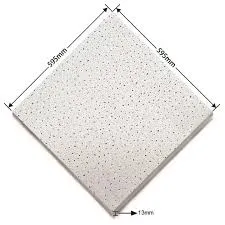- Afrikaans
- Albanian
- Amharic
- Arabic
- Armenian
- Azerbaijani
- Basque
- Belarusian
- Bengali
- Bosnian
- Bulgarian
- Catalan
- Cebuano
- Corsican
- Croatian
- Czech
- Danish
- Dutch
- English
- Esperanto
- Estonian
- French
- German
- Greek
- Hindi
- Indonesian
- irish
- Italian
- Japanese
- Korean
- Lao
- Malay
- Myanmar
- Norwegian
- Norwegian
- Polish
- Portuguese
- Romanian
- Russian
- Serbian
- Spanish
- Swedish
- Thai
- Turkish
- Ukrainian
- Uzbek
- Vietnamese
Gus . 07, 2024 20:00 Back to list
30x30 Ceiling Access Panel Installation Guide for Efficient Home and Office Spaces
Understanding the 30x30 Ceiling Access Panel A Comprehensive Guide
When it comes to building construction and maintenance, certain elements are often overlooked, despite their importance. One such component is the ceiling access panel, particularly the 30x30-inch variety. This seemingly simple square can serve numerous vital functions in both residential and commercial settings. In this article, we will delve deeper into the significance, features, and installation considerations of a 30x30 ceiling access panel.
What is a Ceiling Access Panel?
A ceiling access panel is a removable section of drywall or other materials that provides entry to plumbing, electrical, or HVAC systems located above the ceiling. These panels allow for efficient maintenance, repair, or inspection without the need to dismantle the entire ceiling structure. The 30x30 size is particularly popular due to its balance of accessibility and discreteness, making it suitable for various applications.
Importance of 30x30 Ceiling Access Panels
1. Maintenance and Repair Accessibility One of the most significant advantages of a ceiling access panel is that it grants technicians quick access to vital systems. Whether it's an HVAC duct, electrical wiring, or plumbing lines, a 30x30 panel provides ample space for repairs or adjustments, thereby minimizing service disruption.
2. Enhanced Aesthetics A well-placed access panel offers a cleaner look than having to cut into the ceiling when repairs are needed. Painted to match the surrounding surface, these panels blend seamlessly into the ceiling, maintaining the overall aesthetics of a room.
3. Fire Safety Compliance Many buildings are subject to strict fire codes that require access to critical areas for fire safety inspections. A 30x30 ceiling access panel allows inspectors to easily check for compliance, ensuring that safety protocols are upheld.
4. Versatility These panels are not only used in residential properties but are also common in commercial buildings, warehouses, and industrial facilities. Their size makes them ideal for large-scale installations, providing access to ventilation and plumbing systems seamlessly.
Features of the 30x30 Ceiling Access Panel
1. Material Options Depending on the structural requirements, ceiling access panels can be made from various materials, including metal, plastic, or gypsum. Each material has its benefits; for instance, metal panels may be more durable, while gypsum panels might be more easily integrated into existing ceilings.
30x30 ceiling access panel

2. Locking Mechanisms Some access panels come with locking features to restrict entry to authorized personnel only. This is particularly important in sensitive environments like medical facilities or laboratories.
3. Insulation and Soundproofing Higher-end panels may feature insulation and soundproofing qualities to improve energy efficiency and reduce noise transmission between rooms.
Installation Considerations
When installing a 30x30 ceiling access panel, several factors must be taken into account
1. Location The placement of the panel should facilitate easy access to the systems behind the ceiling while remaining unobtrusive.
2. Structural Integrity Ensure that the installation of the panel maintains the integrity of the ceiling structure. This may require support framing around the panel.
3. Building Codes Verifying local building codes concerning access panels is crucial, especially in commercial buildings, where access points must comply with specific regulations.
4. Finishing Touches After installation, the panel should be painted and trimmed in a way that it matches the surrounding ceiling to avoid any visible discrepancies, thus preserving the visual appeal of the space.
Conclusion
In conclusion, the 30x30 ceiling access panel is a modest yet essential element in modern construction. Its utility in providing maintenance access, enhancing aesthetics, and ensuring compliance with safety regulations makes it a must-have in various settings. Whether you're planning a new construction or considering renovations, do not overlook the importance of these access panels—they are more than just a hole in the ceiling; they are gateways to efficient building management.
-
Transform Interiors with PVC Gypsum Ceiling: A Stylish, Durable, and Moisture-Resistant SolutionNewsMay.19,2025
-
The Smart Interior Upgrade: Discover the Durability and Versatility of Gypsum Ceiling Access Panel SolutionsNewsMay.19,2025
-
The Smart Choice for Interior Design: Discover the Value of PVC Gypsum Ceiling SolutionsNewsMay.19,2025
-
Mineral Fiber Ceiling Tiles: The Smart Blend of Performance and AestheticsNewsMay.19,2025
-
Mineral Fiber Ceiling Tiles: The Superior Choice Over Gypsum for Sound and Fire SafetyNewsMay.19,2025
-
Mineral Fiber Ceiling Tiles: Eco-Friendly Strength and Style for Every CeilingNewsMay.19,2025







